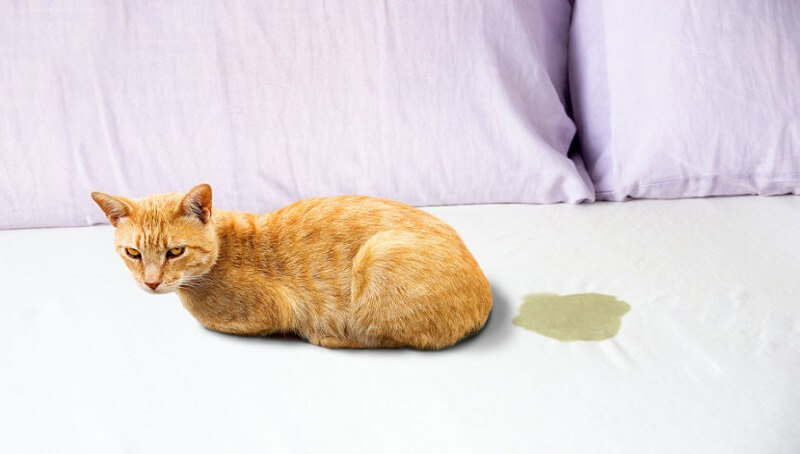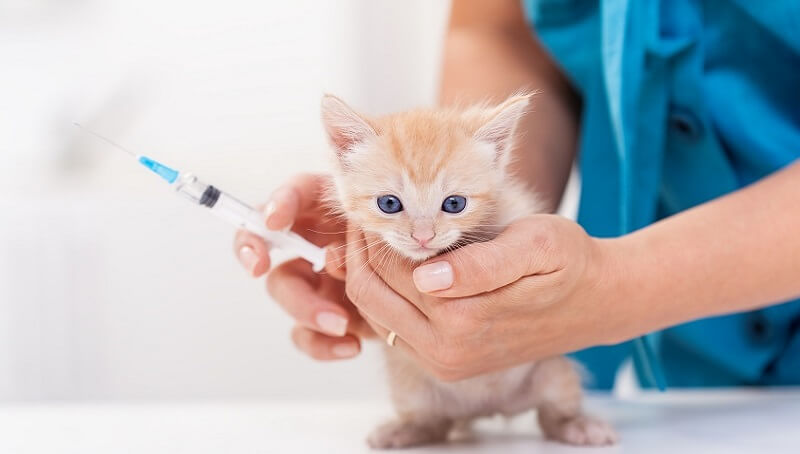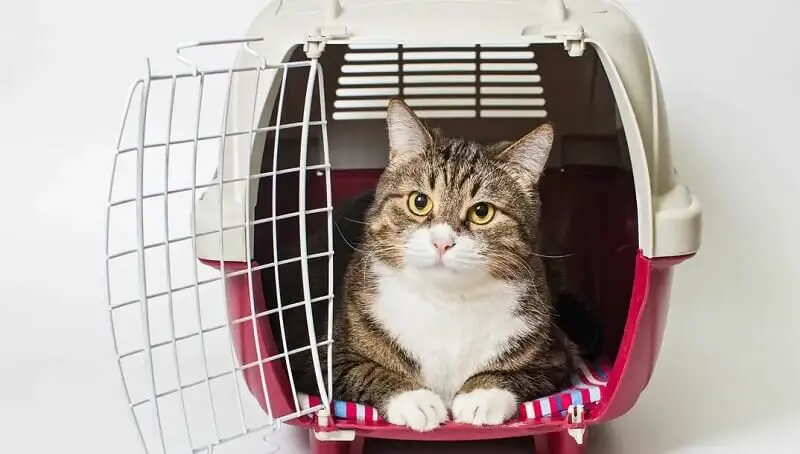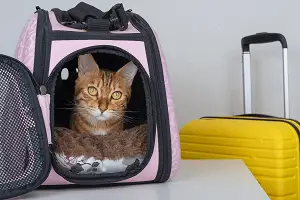
Why is Your Cat Peeing on Your Bed?
October 30, 2022
Cat and kitten vaccinations
November 1, 2022
The carrier is among the basic equipment for cats. Whether you’re picking up a cat from a shelter, breeder, or friend, the animal must be transported safely home. You will also need the transport cage for veterinary visits. So, the choice of the cat transport cage must happen even before the adoption/purchasing of the animal. In this article, you will find some tips for choosing a cat carrier.
The proper size for your cat’s carrier
The carrier should be large enough for the cat to stand, turn and lie comfortably. But it does not have to be too big, because then the cat can slip by mistake during transport. Avoid this to prevent eventual further stress on the cat.
An important factor to consider when choosing a cat carrier is the size of the animal: small, medium, and large.
A small cat carrier is, of course, of a smaller size. For example, it can be 48 x 31,5 x 33 cm or 50 x 32 x 34 cm. It is usually made of plastic, as is the grille. It is the most common in shops.
A medium-sized cat carrier is larger than a small model. They can have different sizes. For example: 37 x 34 x 55 cm or 48 x 51 x 68 cm.
You might also like my articles on:
- How to make traveling easier for a cat
- Why you should never scruff a cat
- How to put a dog grate in your house
Large cat carrier: if you have a larger animal, you can buy a larger product. For example, you can find: 59 x 65 x 79 cm or 63 x 70 x 92 cm models.
The easiest way to get the cat into the carrier
Very few cats voluntarily enter the cage or like to be put in it. And convincing them to get out when you get to the veterinarian is a real challenge for many cat owners. One solution would be to choose a cat transport cage with an opening from above. Because the top opening makes it easier to place the cat in the carrier than to push it through the front door. The ideal cage would be with two openings, one above and one at the front.
Think about safety
Closed cats tend to develop unspeakable abilities and become real escape experts. When choosing a cat carrier, make sure the door closes tightly and cannot be opened by the cat. The cage must be robust. After all, it must resist the claws and teeth of the cat. Handle and attaching belts must be stable. Choose the material from which the cage is made so that the cat does not catch its claws in it or injure herself.
Watch the vent
A carrier cage generally does not mean anything good to the cat. They are often waiting for unwanted visits to the veterinarian at the end of the trip. So, cats are stressed when they see the cage. Stress can make them pant. They use more oxygen than when they breathe calmly. Therefore, when choosing a cat transport cage, make sure that it is well-ventilated.
Think about hygiene
The cat may have small accidents during transport, especially if she is scared. One aspect to consider when choosing a cat carrier is how easy it is to clean it. Plastic carrier cages are the easiest to clean.
Get the cat used to the carrier
It’s often a real struggle to put the cat in the transport cage. Cats generally associate the carrier with a visit to the veterinarian, and of course, they don’t want to go on trips. It’s easier if the cat associates the cage with something pleasant. Before using it for the first time, put the open cage in the house near the cat. The goal is to get her to accept the carrier as a safe shelter. A blanket, favorite toys, and snacks can make the cage look more interesting.
Replace the carrier
It is a difficult task to convince the cat to enter the transport cage after she has already had unpleasant experiences on previous trips. Before you know it, the cat will hide in the farthest corner under the bed or defend herself with her claws and fangs. In this case, a solution would be a new transport cage, to which no resentment would be linked. If you are willing to make a new attempt, take into account the advice from this article in choosing the proper carrier for the cat. With a little patience, you can accustom the cat to a new cage.
The cat should feel comfortable
Not many cats like to sit in an empty cage. So, I recommend that you make the carrier as comfortable as possible for the cat. Use non-slip materials, such as a stable blanket or an anti-slip mattress. A cat-grass pillow can make your cat feel even more comfortable.
Don’t put the cat carrier on the car seat
 As with dogs, cats must be transported in the car safely to avoid the danger of an accident. Tests with a dummy dog showed that in the event of an impact at 50 km/h, the dummy flies inside the car thirty times its weight. So to make sure your cat won’t become a projectile and hurt other passengers, never put the carrier on the rear or front seat of the car.
As with dogs, cats must be transported in the car safely to avoid the danger of an accident. Tests with a dummy dog showed that in the event of an impact at 50 km/h, the dummy flies inside the car thirty times its weight. So to make sure your cat won’t become a projectile and hurt other passengers, never put the carrier on the rear or front seat of the car.
Tests have shown that the safest place for the transport cage is at the feet, behind the front seats. During the test, it was shown that the material of the cage fastened with the seat belt was not sufficiently resistant to an impact at 50 km/h. The door with bars and the lid broke because of the weight of an artificial cat of just 4 kg
In short: In choosing the proper carrier for the cat take into account the following:
The transport cage should have two openings, one on top and one on the front.
- The carrier should be robust and resist the cat’s claws and fangs.
- Handles and belts should be stable.
- The door should close tight.
- The carrier should be easy to clean.
- The transport cage should be well-ventilated.
- The transport cage has its own weight as low as possible.
- The cat cannot catch its claws in it or hurt itself in any way.
There are a lot of cat carriers on the market and that is why before you find a suitable one, it is good to know its characteristics. This is why I have come to your aid with this guide that will help you choose the most suitable cage for your cat.
